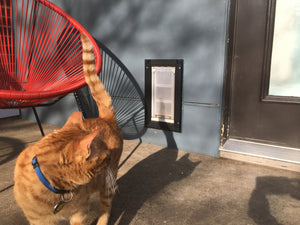How to Perform CPR On Your Pet
There’s no telling when an emergency situation will happen, which is why you should know how to perform more than just simple first aid on your pet. Whether your dog or cat are poor swimmers or they have plenty of water-bound activities, you should know how to perform CPR in case of an emergency.
Please note that many pet training schools and first air programs (like the Red Cross) have classes that teach pet owners how to deliver first aid care to their pets, including CPR. We highly recommend investing in a pet first aid course.

How to Perform Cat and Dog CPR
Once you have removed your dog or cat from the unsafe situation, start transporting them to the nearest veterinary hospital. In the meantime, you can perform pet CPR with the following steps:
#1) Checking for a heartbeat and breathing. Check to ensure that your pet is still breathing and that their heart is still beating. If your pet’s chest is moving but you cannot find a heartbeat, begin CPR by administering chest compressions.
| Pet Size | Hand Placement |
|---|---|
| Cats & Small Dogs | Place the heel of one hand right over your pet's heart. Layer your other hand on top of your first hand. |
| Deep-Chested Dogs | Place the heel of one hand over the widest part of your dog's chest, then place your other hand directly on top. |
| Barrel-Chested Dogs | Arrange your dog on their back. Then place one hand over the widest part of their sternum. Layer your other hand on top. Lock your elbows and make sure your shoulders are in line directly above your hands. |
#2) Give chest compressions to your pet. Place your hands on your pet based on the above chart. Next, push hard and fast at a rate of 100 to 120 compressions per minute. You need to compress a third to half of your pet’s chest. Make sure that their chest rises up again before compressing again (this is known as recoiling). Perform 30 chest compressions to get the heartbeat going again
#3) Perform rescue breaths. Once you have administered 30 chest compressions, gently close your pet’s mouth and extend their neck to open the airways in their throat. Place your mouth over their nose, making sure there is no way any air can escape. Exhale into your pet’s nose until you see their chest rise. Repeat.
#4) Repeat chest compression and rescue breath cycle. Once you have administered two rescue breaths, give your pet another round of chest compressions, repeating the process in step 2 before giving them more recuse breaths. Do this until your pet begins to breathe on their own.
#5) Check for breathing and a heartbeat. While performing CPR, make sure you check that your pet has started breathing on their own and that their heartbeat has returned every two minutes.
#6) Go to an animal hospital. Continue performing CPR until your pet reached a veterinary hospital. From there, a professional will take over and help your pet to the best of their abilities.
Having to resuscitate a beloved pet can be terrifying, but knowing beforehand how to perform emergency measures like CPR can literally save your pet’s life.




